My favorite pair of leggings were digging into my belly, yes… stretchy leggings were too tight around my stomach. This was the sensation that pushed me to start making healthier choices.
In 2017, I committed to living a much healthier life. I traded premade sandwiches from the campus food court for homemade lunches. Switched sitting in the college lounge on my phone for sweat sessions. And the main part of this lifestyle change was exercise. Even though my dad had been a gym rat his whole life, I still felt new to working out and unsure of what to do or where to start when it came to types of exercise.
If you are feeling similar, you found the right spot on the internet! By the end of this post, you’ll feel less overwhelmed and less confused because you’ll learn the basics of working out and the types of exercise which will allow you to live a healthier life and work toward holistic health!
This post may contain affiliate links which means I’ll receive a commission if you purchase through my links, at no extra cost to you. Please read full disclosure for more information.
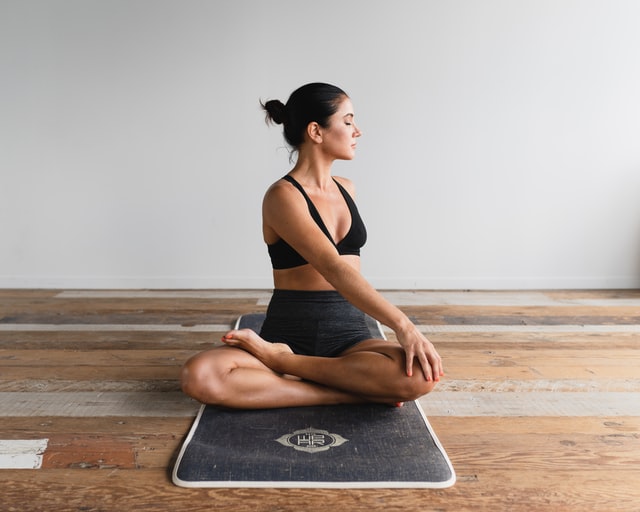
Types of Exercise
Okay, let’s break it down.
There are essentially four main types of exercise:
Endurance/aerobic/cardio
Strength training
Flexibility
Balance
Endurance/Aerobic/Cardio
I refer to this one as cardio. This is the type of exercise that gets your heart rate pumping through periods of activity. Think running, biking, dancing, swimming, or any move that you can sustain to get your heart rate up for a longer period of time.
The intensity can vary here. You don’t necessarily have to engage in super high-intensity, vigorous movement to get a good cardio workout in. Think power walking!
Cardio can also be low or high impact. Typically, low-impact cardio doesn’t involve jumping. High-impact cardio could mean a HIIT workout (high-intensity interval training), where you have multiple exercises done for short amounts of time with rest in between (more on this later).
I like cardio a lot because it’s so fluid, meaning there are endless things you can engage in that are considered cardio. If you’re new to working out or you’re intimidated by it, you can simply turn on your favorite playlist and dance around alone, and BAM you’ve got a cardio workout in without needing to know anything about exercise!
You can also turn on a Youtube video for some guided cardio. I love FitnessBlender.com for this!
Strength Training
This one’s my favorite! Strength training is all about using weight or resistance to build or tone your muscles. When you strength train, you’re actually tearing muscle fiber and rebuilding it stronger!
These are the adjustable dumbbells I use and love! They’re great because it’s a whole set that only takes up the space of one pair of dumbbells.
No worries if you don’t have dumbbells! Sounds silly, but you can absolutely use filled water bottles or books too. Anything with weight around your house can get you started here. You don’t need fancy equipment to start working out.
Strength training can also be done with bodyweight exercises. Again, no weights required to get started. You can use your own weight to give you resistance and work against yourself, squeezing your muscles as you complete each rep. This is called antagonistic motion.
Form is suuuuper important here, so read on in the third section of this post to learn about proper form when lifting weights.
| Related Reading: How to Eat Healthy Without Going on a Diet: The Ultimate Guide
Flexibility
The first thing that comes to mind may be yoga. But the truth is, you can stretch any time of day for any length of time! Or you can sit down and do a stretching routine on days when you’re letting your sore muscles recover from a cardio or strength workout. That’s called active recovery.
If you’re new to working out, flexibility and range of motion are so important for you to be able to exercise at your best when you’re doing cardio or strength workouts. So don’t skip this type of exercise!
Some flexibility can be worked into your warm-ups at the beginning of your workouts and cool-downs at the end. Never skip those! (More on that in the next section.)
You can choose to hold stretches for 10 seconds just to loosen things up, or 30+ seconds to increase flexibility.
Balance
Balance work is key for prepping your body for everyday life!
Working out, in general, will prepare your body for the physical demands of your responsibilities, even with something as simple as bending down to pick up a box! If you’re actively exercising and moving your body, it’s ready for all the ranges of motion that life expects. You’ll be less likely to injure yourself doing daily tasks! And balance is a big part of that.
Core work really helps in the balance department.
If you make it a point to work on your core, whether as stand-alone workouts or as a part of other workouts, you’ll be able to stabilize yourself so much better in your everyday life.
Tip: For help setting workout goals, read this. And for help establishing a workout routine, read this.
(I highly recommend the book Woman Code by Alisa Vitti for an interesting and super helpful view on when to do what type of workout!)
Here are great workout pants to make you feel totally confident and cute:
Flattering leggings that will make you feel confident
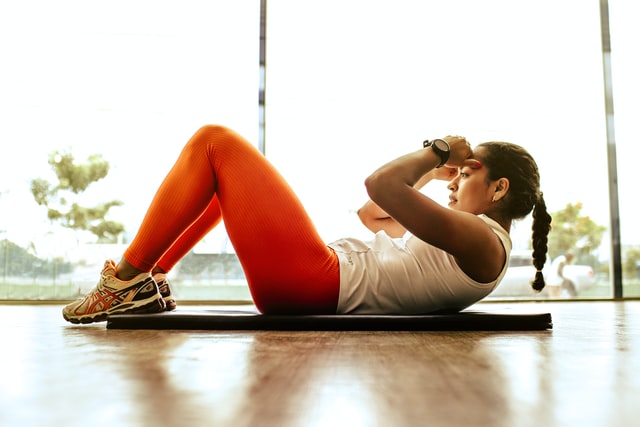
And these are my favorite headphones to work out with:
Wireless headphones that are great for working out
CONTENT UPGRADE: Personal workout template + My workout routine + Healthy snack options + a Secret
Grab this killer content upgrade for my favorite workout plans, a workout schedule, and a template for you to create your ideal workout plan.
Be sure to check your spam or promotional folder in your email for the download.
Fundamentals of Exercise
I’m going to run through some key points you should know as you embark on your exercise journey. As you work movement and exercise into your lifestyle, keep these things in mind.
1. Warm Up and Cool Down
Never, I mean NEVER skip either of these!
A warm-up comes at the beginning of a workout before the real work starts. It can be just a few minutes, and it should focus on the muscles and body parts that will be working during the real workout. The warm-up should mimic the workout. If you’re doing weighted lunges and squats in your workout, include shallow body weight lunges and squats in the warm-up.
For strength and HIIT, the warm-up is a muuuuch less intense, shorter version of your workout, ideally. If you’re just going for a run as your exercise for the day, your warm-up could be a walk that builds to a power walk before you start jogging.
Every warm-up looks different, but every warm-up prepares your body for what’s to come so you can move safely in your workout.
A cool-down is meant to bring your heart rate down and give some love to the muscles you just worked so hard. You shouldn’t finish your workout and just sit down, because you need to gradually bring your heart rate down, otherwise you risk passing out! You can start with a little jog in place, swinging your arms across your body, arm circles and butt kickers… any slower movement until you feel your heart rate slow a bit.
Then you can move into stretching the muscles you just worked. Your cool down and stretch can be as long as you want, but don’t gyp yourself here. Give yourself at least five minutes to cool down.
2. Know Your Limits
When you’re working out, it’s just you and the sweat, friend. You cannot rely on any workout instructor or video to tell you exactly how hard to push and when to stop and take a breather.
You need to know exactly what your limits are. This means you have to be in tune with your body enough to know when to stop and rest before you get back into it. You should never push yourself to the point of collapse, passing out, or injuring yourself.
Rest when you feel your form start to suffer.
Take a break if you’re feeling lightheaded or dizzy.
There is never a benefit to working out through pain! You’ll only hurt yourself more. So don’t tune out and jam to your music too much to the point where you can’t hear your body asking for a break.
If you’re someone who’s hard on yourself or expects a lot of yourself, try not to put that pressure on when you’re beginning your fitness journey. I’ve already written about managing your personal expectations so you can work out free of your own judgment.
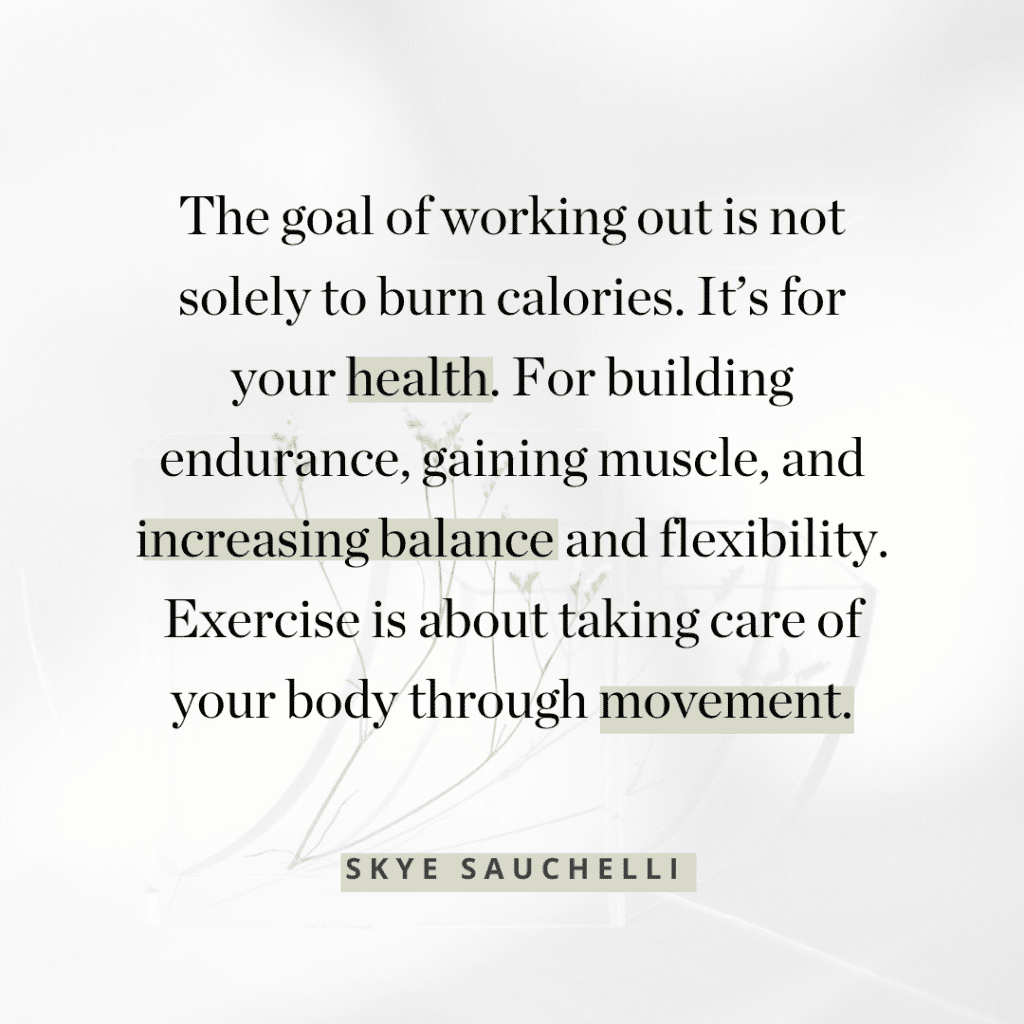
3. Drink Water
It’s sooo important to be hydrated throughout the day so you’re ready for a workout. And it’s also crucial to have water nearby when you’re working out. I like to take a water break halfway through a workout at the minimum, and drink lots of water after a workout too to replenish your body from all that it lost through sweating.
Here are the two water bottles I use every day:
- 36 oz Yeti with the chug cap for easy and quick sipping between sets
You can save the heavy drinking for after your workout so you don’t have water sloshing around in your belly during your workout. Sipping throughout your workout is good too. Whatever feels good and works for you, as long as you’re keeping hydrated.
4. Eat Something After You Exercise
This may seem counterintuitive to some, especially if you’re new to working out. But let me tell you something important: working out is not just about burning calories.
Let me say that again: The goal of working out is not solely to burn calories.
I got caught up in this thinking for a while.
Working out is for your health. For building endurance, gaining muscle, and increasing balance and flexibility. Exercise is about taking care of your body through moving. It’s about movement that feels good and benefits your health.
So… if working out isn’t about working off that doughnut or creating a calorie deficit to lose weight, then it stands to reason it’s okay to eat after a workout, to consume calories even though you just burnt some off.
It’s so crucial to eat after a workout to replenish your body. You need a certain amount of carbs to function! If you notice that toward the end of a workout, you’re making little mistakes, it’s because your brain needs fuel and you’re burning it off by working out. So do your body the favor and eat a healthy snack or meal after working out, ideally within 30 minutes to an hour.
A healthy snack or meal after exercising will help you to recover so your body can capitalize on the work you just did.
If you’re not sure what to eat, pick something with protein! Apple and PB, a cheese stick or two, nuts, a protein shake, yogurt and fruit, or something a little more substantial if it’s feasible for you.
I wrote a post with some healthy snack ideas to get you started!
And if you’re curious what I eat, read this!
| Related Reading: How to Eat Healthy Without Going on a Diet: The Ultimate Guide
5. Discomfort YES, Pain NO
When you’re exercising, you’re bound to feel uncomfortable when you’re pushing yourself. And that’s okay! Discomfort is normal and okay. However, if you feel pain, STOP! Adjust your form or give yourself a break. Don’t work through pain because you’ll just injure yourself more.
I notice this most with my knees. I used to feel pain in my joints when trying to do curtsy lunges. So instead of working through the pain, I replaced curtsy lunges with regular lunges or a super shallow curtsy lunge that didn’t hurt my knees until my body got used to that range of motion and I was more comfortable doing them. I’m now at the point where I can do curtsy lunges WITH weight and feel no pain! Work with your body and don’t force anything!
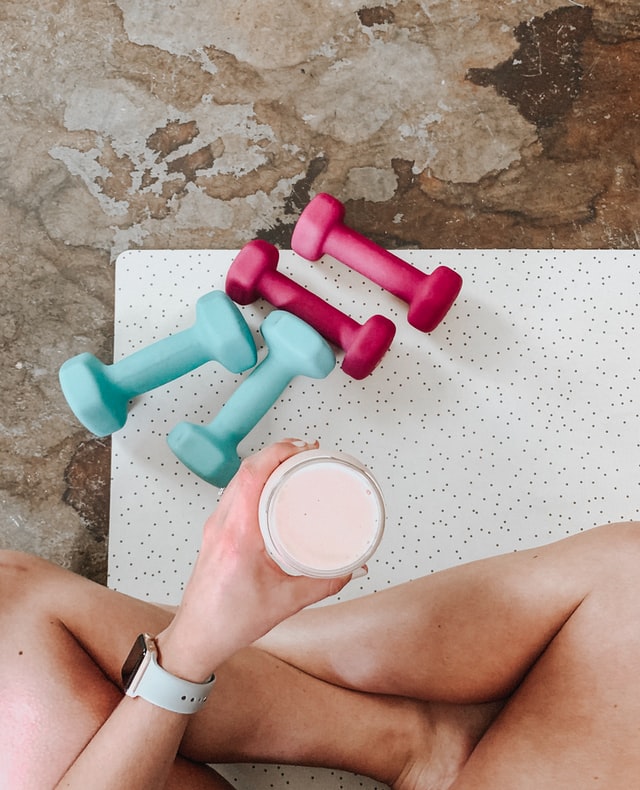
6. Rest Days
Friend, don’t work out on sore muscles! You’re not benefiting yourself at all! Your muscles need time to repair, rebuild, and heal before they’re ready to perform again.
Rest days are key! Your rest days can be full rest where you don’t engage in any movement, or they can be active rest days where maybe you go for a light walk, do a 10-minute yoga flow, or a quick stretch.
I usually take my rest days on the weekend because that works for my schedule. Work your exercise routine into your schedule in a way that fits for you!
If you feel like you’re too tired to work out, read this! Or if you want more energy, read this.
7. How to Get the Most Out of Each Exercise
My tip for maximizing your workouts is simple: at the hardest part of each move or exercise, hold and squeeze for even just a second before releasing and finishing the move.
For example, if you’re doing a basic bicep curl, at the top of that range of motion (when you’ve brought the dumbbell up toward your shoulder, right before you start to drop it down to finish the rep) squeeze your muscle and hold the dumbbell there for just a fraction of a second longer before you bring it back down. This will really help you burn out those muscles and help you not skimp through a workout just to “get it done.”
Squeezing and holding maximize the work that muscle has to do.
No matter if you’re strength training or doing cardio, this can apply. Be intentional about contracting (squeezing) your muscles! All of them, not even just the ones that are working at that moment.
For example, if you’re doing squat jumps during a HIIT workout, you can be actively squeezing your glutes (the muscles you’re working) and also contracting your core (sucking in your belly) (the muscles you’re not using) to get the most bang for your buck. Another example is if you’re strength training for your upper body, bend your knees slightly to engage your legs even when the focus is on your upper body.
8. Mix Up the Types of Exercise You Do
Variety is gold when working out. Have you ever seen someone with huuuge arms and scrawny legs? No shame here, but this is an example of someone who focuses heavily on upper body strength. They’ve likely ignored other types of exercise to get those results.
I like to strength train 2-3 days a week, do cardio 2ish days a week, and sprinkle in some yoga and stretching where it feels good. Maybe that means I replace one of my strength or cardio days with a yoga flow, or maybe I do yoga on a rest day or in addition to a more intense workout. I also love pilates so I’ll throw that in there when I’m feeling it. And sometimes I’ll go on a run or bike in place of an at-home workout.
When you mix up the types of exercise you engage in, you’ll be well-rounded in your fitness, strength, endurance, flexibility, and more. You’ll reap all the benefits the various types of exercise have to offer! So go ahead, don’t be afraid to mix up your days and weeks. It’s not necessary to stick to a super rigid workout schedule.
If you were planning on doing a cardio/HIIT workout after work, but your body is telling you to take it easy, consider a stretching routine instead. Listen to your body!
Tip:
It’s not necessary to work out for hours on end. I believe if you are working out intentionally, and not skimping your way through a workout just to get it done, you don’t need to work out for more than an hour. Even an intentional 20-minute workout does the trick!
Related reading:
If you need help finding balance in life, the balance you need to have time to incorporate exercise, read this.
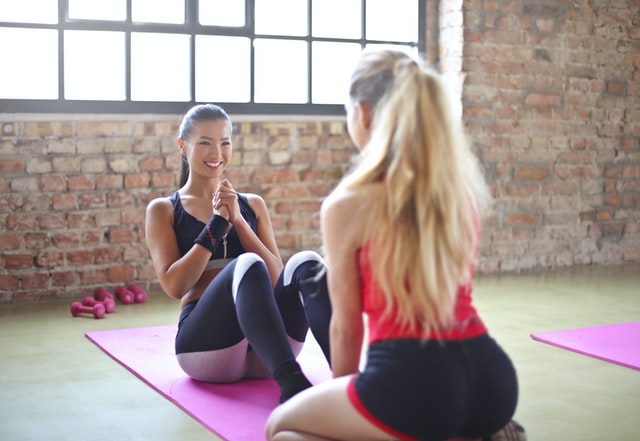
9. Range of Motion Trumps Weight Any Day
Specifically with weight training, it’s much more important to have a full range of motion with less weight than a smaller range of motion with more weight.
What I mean is this: it’s better to be able to sink down as low as comfortable in your squat while using no weight or very light weight, than to jump in with heavy weights and only be able to sink half as low.
The reason is that your range of motion will grow and your body will eventually be ready for increased weight, so give it the time it needs to increase the range of motion!
10. Always Keep Your Core Contracted
No matter what type of exercise you are doing, you can alllllways keep your core tight. This trains your abs to be constantly contracted instead of naturally extended or pushed out. This is really the secret to a flat belly! The more you contract your core when working out, the more natural it becomes, and the more you’ll do it in your everyday life. You’ll have trained your core to naturally contract instead of extend.
If you’re new to that, suck in your belly right now and tighten it. That’s what I mean. A contracted core is what your belly does when you laugh. Or you can look at it this way- pull your belly button toward your back.
A contracted core helps with balance and you’ll be subtly working on your abs all the time!
11. Always Breathe
Breathing comes naturally to us in our everyday lives, but for some reason, when people start to work out, they want to hold their breath when it gets hard.
Do your very best to avoid holding your breath while exercising and exerting yourself. You’ll notice you start to hold your breath at the hardest part of an exercise. I find I have to resist the urge to hold my breath most when I’m doing an ab workout.
A helpful tip is to breathe out on the hardest part of the exercise. For a squat, breathe in on the way down and breathe out on the way up. For an overhead press, the hard work is the first part of the exercise, so breathe out on the way up, and breathe in on the way down. If that feels too complicated, just breathe how it’s comfortable and you’ll be fine!
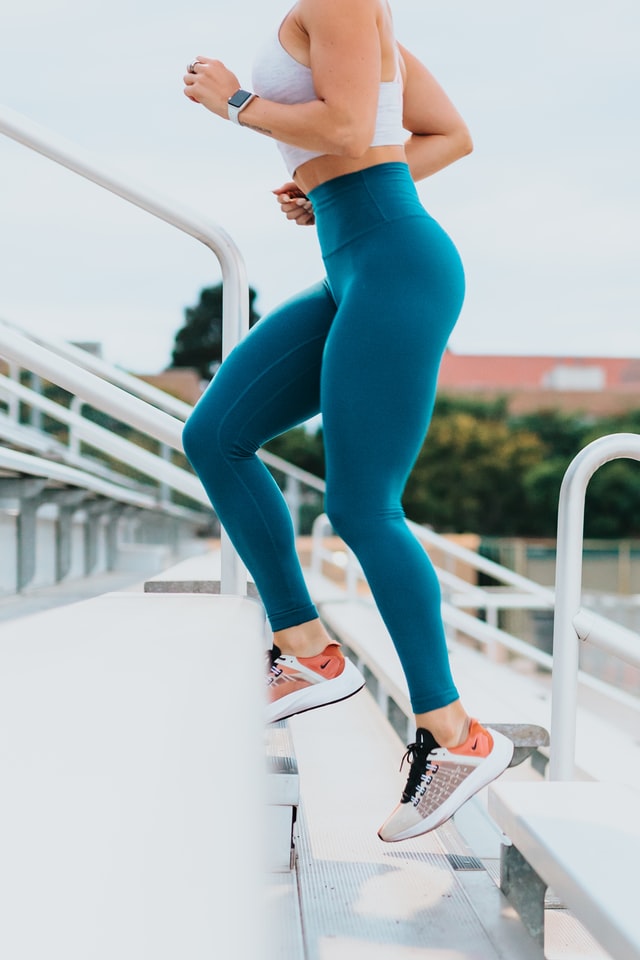
12. Keep a Flat Back
Form is so important when you’re working out. Keeping a flat back for most exercising is a safe bet. You don’t want to be hunched. Align your posture so your back is flat.
We’ll go into proper form for popular exercises in the next section, but as a general rule of thumb, keeping your back flat as much as you can will get you started well!
13. Body Weight Exercises to Start
I just threw a lot of tips at you, and saved this one for last because it’s a way to keep it simple and get back to basics.
If you’re not quite ready to introduce weights into your routines, start with body weight. Body weight workouts are so beneficial and useful because you can do them anywhere! No equipment necessary.
Bodyweight workouts are a great way to get started and dip your toes in. FitnessBlender.com has a great selection of body weight workouts! (Fitness Blender is my favorite way to workout!)
To Wrap Up the Fundamentals of Working Out, Here’s Some Common Lingo:
Reps– (repetitions) one single exercise done a certain amount of times in a row.
Sets– a certain number of reps in a row.
Example: you might do 4 sets of rows, with 10 reps per set. This looks like doing 10 rows in your first set, followed by a rest, followed by set 2 of another 10 reps, rest, set 3 rest, set 4, rest.
AMRAP– stands for “as many reps as possible” in a given time. In this style of workout, you’d set the timer for say 45 seconds, and do as many reps as you can in that amount of time. No need to count your reps here.
HIIT– stands for “high-intensity interval training”. These workouts are built with short bursts of high-intensity exercises, followed by a shorter break. HIIT workouts might be in the format of 20 seconds on (active), 10 seconds off (rest), then the same or a different exercise right after your break, again for 20 on and 10 off. Because the active intervals are so short, you can really push hard. It’s a sweaty workout for sure!
Superset– two different exercises back to back with no rest in between. This is a time saver because you’re resting one muscle while you’re working another.
Interval– a set amount of time in a workout. Above in the HIIT example, it’s a 20-second active interval, followed by a 10-second rest interval.
Range of motion– the amount of movement your body is capable of within an exercise.
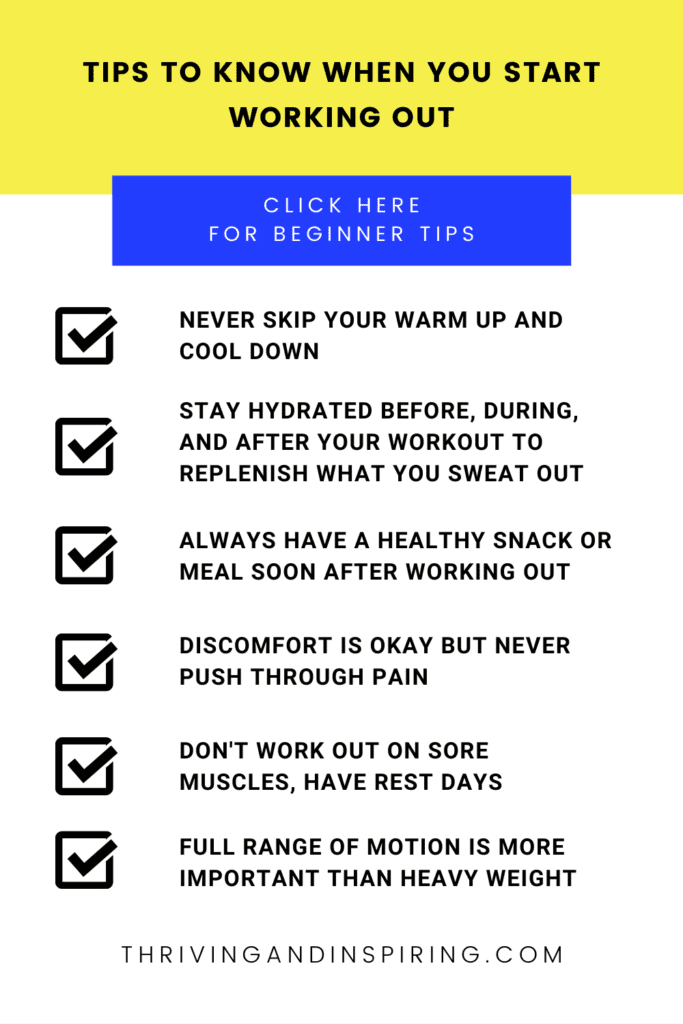
Proper Form for Common Exercises
Now you’re familiar with some workout lingo, understand some key fundamentals and tips to get you started, and are familiar with the 4 types of exercising, the last important thing to cover is proper form.
Form, form, form!! It has to be correct to avoid injury.
So here are a few common exercises, explained, so you can confidently start using these moves in your workouts!
Tip: to perfect your form, start doing these exercises with no weight. Only when your form is perfect, you can add weight.
Squats
Keep your back flat, weight in your heels, feet hips width apart or a little wider, and hinge at the hips first- meaning stick your butt out first before you start to bend your knees. Look straight ahead, not down. Breath in on the way down, and watch that your knees don’t go too far over your toes. You’ll hear mixed answers on this matter- some believe it’s not okay for your knees to go over your toes, and others believe it is okay. Breathing out as you come up, squeeze your glutes, and focus on turning your inner thighs outward to really engage the glutes. Core sucked in the entire time.
Variations of a bodyweight squat:
Cardio– jump squats, pop squats, squat to burpee, shuffle squat
Strength– squat hold, squat pulse, squat with weights held at your shoulders, weighted sumo squats (wider stance), weighted ski squats (very narrow stance)
Lunges
There are forward, backward, and side lunges, but the principles of form remain the same no matter which variation you do.
The farther you step and deeper you go, the harder it is. Keep it shallow if you’re just getting familiar with lunges.
Let’s go over a forward lunge. From a standing position, step one foot straight in front of you, bending your knee as you step, keeping the other planted while breathing in. Your front foot will be on the ground, and your back heel will be lifted. Keep your torso upright, not leaning forward. Your bent front knee should not go beyond your front toes. You should be making 90-degree angles with both knees and weight should be distributed evenly between your two feet. Contract your core. To come up, breathe out and step your front foot back, squeezing your glutes.
Variations of a bodyweight lunge:
Cardio– jumping lunge, alternating lunge (forward, side, back repeated), step through lunge (backward to forward with no touch down in between)
Strength– weighted lunge (weight held by your sides or at your shoulders)
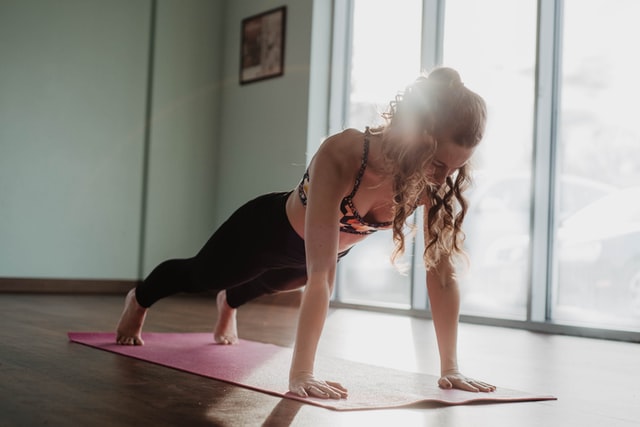
Plank
You can do a plank from your hands or on your forearms. You can modify it by resting your knees on the ground. However you do plank, form is the same. Neck is neutral. Your body should be in one straight line. Your butt shouldn’t be up in the air or drooping. If you’re on your hands, your hands should be directly under your shoulders. If you’re on your forearms, your elbows should be directly under your shoulders.
My best tip for planks is to tuck your pelvis in. It creates a heck of a burn on your abs.
Variations of a plank:
Cardio– half moons (bend and bring on leg up to your side, and alternate), mountain climbers, plank taps (tap one foot out to the side, then the other, alternating), up down plank (alternate hand positions from forearms to hands)
Strength– one-legged plank, side plank hold
Push Ups
Everyone knows this one, but form is important here too! Your neck should be neutral, and you shouldn’t be looking down. Body in a straight line just like a plank, hands slightly wider than shoulders, level with your chest, feet hip-width apart. Slowly bend down, breathing in, and push back up, breathing out.
Variations of a push up:
Cardio– burpee, plyo push up (as you push up, both hands come off the floor for a short moment)
Strength– tricep push up (keep your elbows pinned at your sides)
Overhead Press
This works your chest, shoulders, arms, and upper back. An overhead press is when you lift two dumbbells, one in each hand, palms facing away from you from shoulder height, above your head.
You can do this standing or sitting. If you’re standing, consider bending your knees slightly to engage the lower body too. Keep your back flat, core contracted, and weights resting by your shoulders. Torso is upright and your chest isn’t pushed out. Your spine is neutral. Breath in before you start. As you press the weights up and above your head, breathe out, and stop just shy of your arms becoming straight. Keep that slight bend, then breathe in as you lower your weights back to your shoulders. Repeat to finish your set.
Variations:
Strength– you can balance on one foot and switch feet every two repetitions to add some balance and core work in
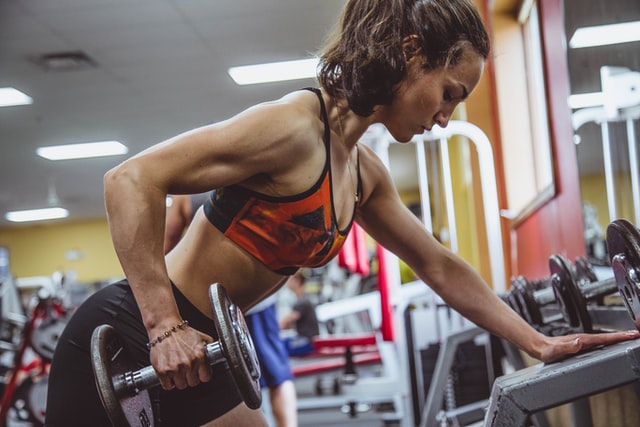
Dumbbell Row
(Pictured above) You can do this with or without a bench. I don’t have a bench, so I do it without, by alternating my stance.
For the right side, step your right foot back with a slight bend in the knee. Bend your front knee a bit more than the back one. Breathe in. Hold the dumbbell in your right hand directly below your shoulder and pull up as you breathe out. Your body shouldn’t be turning as you lift the weight. Keep your torso steady and square. Keep your elbow pinned to your side, don’t let it fly outward away from your body. Slowly drop the weight as you breathe in. Repeat to finish your set, then switch to the left side.
Variations:
Strength– weighted row from a plank position
Deadlift
Flat back all the way! Pick up your dumbbells, stand with your feet shoulder-width apart, slight bend in your knees, hinge at your hips, stick your butt out, and keep that back flat, baby! Remember a neutral neck. As you hinge, let the weights hang straight down. Let your arms glide the weights straight down, as if they were sliding down your legs, keeping them close to your legs. Go as low as is comfortable for your hamstrings, breathing in on the way down. Exhale to come up, squeezing your glutes. Your glutes are what are bringing you back up.
Variations:
Cardio– I find that when I’m strength training, it’s also a cardio workout too because my heart rate goes up and stays up since I’m working so hard.
Strength– be careful here, but you can point your toes in or out for variations of a dead lift, but you’ll need to use much less weight than the traditional version where your toes are pointing forward.
Let’s Bring it Home
Phewww, that was a lot of info, but I think it will truly set you up well if you’re an exercise beginner! I’ve given you a description of the types of exercise you can try, some fundamental tips and lingo to get you started, and proper form for common exercises. Hopefully, all this has dispelled some of the mystery of working out. It’s really not as complicated as people make it out to be. Just move your body in a safe way that feels good to you, and listen to what your body tells you in response.
I hope you feel less overwhelmed if you’re new to working out and less confused about where to start. Above is your roadmap to get started so you can work toward a healthier lifestyle.
Share this post with someone who could benefit from it!
And follow me on Pinterest for encouraging graphics!

This is SO helpful! I really want to make healthier decisions and be more active but it can be really overwhelming to know where to start. Thanks for sharing such a brill overview 🙂 x
mia // https://miasdiyprojects.com/
It can absolutely be overwhelming at first with all the information out there and all the different opinions. My goal was to strip it down to the bare bones basics. I’m so glad it helped you 🙂 I wish you so much success on your fitness journey!
This is a great in-depth article and its full of important information that everyone who’s actively working out should know! With or without a personal trainer, each element is so necessary and you nailed it!
Totally agree, thanks so much!